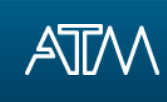
TSM Resources
Autograph @ ATM
Articles in "MATHEMATICS TEACHING"
MT-274
Dec 2020
Douglas Butler:
"Autograph - a new resource for all seasons"
- Article (pdf)
- Videos and Autograph files
Autograph began its life on the BBC computer in the 1990s. It has since aimed to set new standards for the most effective pedagogical use of dynamic mathematical objects in 2 and 3 dimensions.
In its latest incarnation, Autograph is free to download, thanks to the generosity of La Salle Education and Complete Maths. It will soon run on all platforms - likewise Geogebra and Desmos, so why Autograph?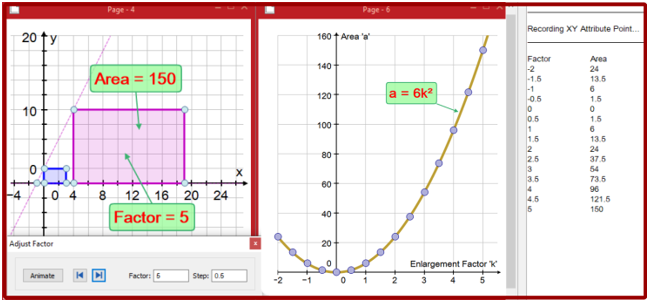
MT-248
Sept 2015
Douglas Butler:
"ax + b" is dead, long live "a(x – b)"
- Article (pdf)
- Videos and Autograph files
The straight-line: the pitfalls of starting with y = ax + b (or mx + c)
Students learning about graphs start, naturally, with the straight-line. The traditional approach is to use the forms:
y = mx + c, or y = ax + b,
and to discover, by exploration, that ‘m’ represents the gradient and ‘c’ the y-intercept. This is fine as far as it goes, but the skills learnt do not transfer to the transformation of polynomial or trigonometric functions, or even the circle.
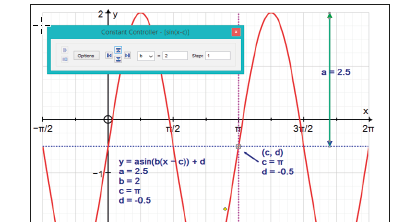
MT-229
July 2012
Douglas Butler:
"The Geometry of Calculus"
- Article
(pdf)
- Videos
In short, this is a 'master class'. The learning and teaching of mathematics can be revolutionised with the creative use of dynamic software is an oft quoted mantra. Here, this mantra is exemplified through the documented experiences of using Autograph to enliven, to extend, and to foster the understanding of differentiation and integration. The process is explained in the text which will leave the reader wanting more. To forestall any associated frustration, the author provides a treasure trove of activities, preconstructed files, video clips
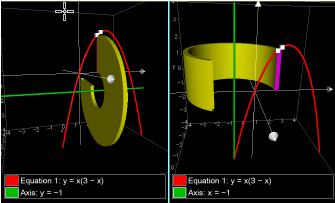
MT-235
July 2013
Alan Catley:
"Autograph in the Classroom"
- Article (pdf)
Autograph is possibly the best general tool for the mathematics classroom because it is:
• easy to use • designed by a teacher • incredibly flexible • brings school and college maths to life.
I gave a taste of this at the NCETM Digital Technologies Conference (Institute of Education, London, 27th February 2013) - which is summarised below. The links to videos and resources at the end will better illustrate how this can revolutionise your teaching.
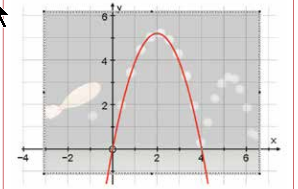
MT-216i
Jan 2010
Douglas Butler:
Having Fun with Statistics
Exploring the use of ICT in the teaching and learning of statistics. First some useful data on the web, then ways of using Excel and Autograph to bring it to life.
Douglas Butler:
MTi goes hexagonal
Step inside - readers have sent us problems to delight and entertain. Some to think on, some to work on and some to comment on. Square shuffle Video doodling Impossible solid Got it Paper folding Egg shaped
Editorial
A few words from Douglas Butler and Lyndon Baker.
Welcome to the second edition of MTi. The hope is that you the viewer, the reader are enjoying your forays into the technology. MT enjoys a certain community spirit, and our hope is that we su...
MT-214i
Sept 2009
Douglas Butler:
"The Answer is Parabola
- now what is the question?"
Just how many questions can you ask to which the answer is “It’s a parabola!”? Douglas Butler suggests a few. Follow the links and you may be surprised. Alternatively you could pose some other questions that give wider access to...
Douglas Butler:
A tour of TSM Resources
At last - A web review with live links! For this opening edition, Douglas Butler takes you on a tour through his TSM resources site, and offers up a few surprises. For the Busy Teacher Click the image for a video tour of some websites...
Editorial
A few words from Douglas Butler and Lyndon Baker.
Welcome to the second edition of MTi. The hope is that you the viewer, the reader are enjoying your forays into the technology. MT enjoys a certain community spirit, and our hope is that we sustain in part that spirit as we boldly go where none have been before...possibly.
MT-198
Sept 2006Alan Catley:
"Autograph in the KS3 Classroom"
- Article (pdf)
Autograph, as version 3 has a very much simplified ‘standard level’ which is perfect for introducing pupils to graphing, geometry and handling data, as well as enhancing understanding of basic algebra skills. Below are just a few examples that are very simple to prepare.1
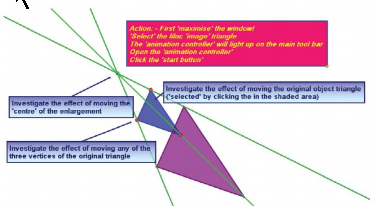
MT-197
July 2006
Douglas Butler:
"Migrating from 2D to 3D in Autograph"
With both Cabri and Autograph now venturing into 3D, the dimension that previously was only demonstrated in the classroom with a lot of arm waving and crude wire cages can now be explored dynamically on screen. Cabri 3D concentrates on constructions, using the principles of Euclidian geometry, whereas Autograph creates objects using a coordinate geometry approach. Both are powerful and useful aids to visualisation in this important area of the curriculum.
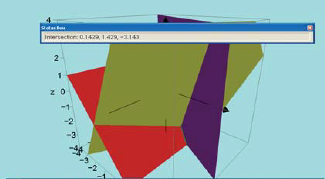
Back to TSM Resources
November 2020
